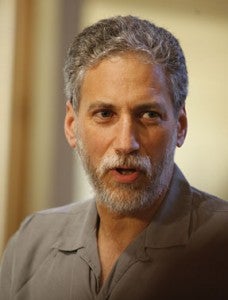 Some hope is on the horizon as more evidence shows the 12 biggest refineries in California are exploring and undertaking large energy efficiency improvements.
Some hope is on the horizon as more evidence shows the 12 biggest refineries in California are exploring and undertaking large energy efficiency improvements.
A recently released ARB report points out that these investments will save money, decrease greenhouse gas (GHG) emissions, and reduce air pollution. Of course, many of them come with a hefty price tag – even by oil industry standards – but they are also yielding outsized benefits.
In the report, the California Air Resources Board (CARB) identified 401 energy efficiency opportunities that are completed, ongoing, scheduled or under consideration at the state’s biggest polluters. Most of these investments have been undertaken since 2009 – the first year following the adoption of California’s AB 32 Scoping Plan, a blueprint for reducing emissions throughout the economy.
In total, these projects would reduce GHG emissions from these 12 facilities by 2.78MMT CO2e annually, about 9% of their statewide total for climate change pollution. In addition, these improvements would create individual net savings of up to $25 million annually. What’s more, these savings estimates do not include the benefit these companies get from having to secure fewer allowances in the state’s landmark cap-and-trade market – worth another $50 million a year at a forecasted carbon price of $18 a ton.
As we wrote earlier, annual data released by CARB shows that many of these 12 refineries’ emissions have been decreasing every year from 2008-2011, and the 401 energy efficiency projects are likely part of the reason. To support this, data on individual firms shows that almost all of the state’s facilities have either taken part in the efficiency improvement process or are in the stages of doing it soon.
Out of the 401 opportunities, nearly 80% of the emissions reductions have been completed or will be in the next few years. Another 7% are scheduled and 15% are under consideration. The majority of improvements are from equipment upgrades, adapting new technologies, and from changing processes such as reducing steam usage, improving boiler function, and changing equipment duty cycles.
Valero’s Benicia refinery, one of the 12, has identified 43 projects that are completed or currently underway, with a 7% annual GHG emission reduction. These improvements are mostly through new steam boilers or other new electric equipment. These upgrades also have a less than two year payback period, with an annual cost savings of $16 million.
Figure 1.

These findings confirm a 2010-2012 DOE Industrial Assessment Centers audit, which found that large industrial facilities had an average of 16% electricity cost savings available from energy efficiency upgrades, a 3% increase from the 2006 audit’s findings. This demonstrates that innovation and technology are constantly improving and savings opportunities continue to emerge.
Of course, refineries aren’t just giving themselves a chance save money from reduced energy or carbon credit purchases when they invest in efficiency. They’re helping reduce the poorest air quality and highest asthma rates — in communities located right next door to them.
As CARB’s report shows, improvements to cut GHGs at refineries have the double benefit of cutting the release rates of hazardous chemicals and pollutants that make people sick – since refining oil is a process that inherently causes harmful pollutants to be released.
Altogether, this new data proves AB 32 is working, not just for the health of the planet by fighting climate change, but for the public health of California.
 As we’ve highlighted in previous posts, water and energy regulators often make decisions in silos, despite the inherent connection between these two sectors. Texas is no exception.
As we’ve highlighted in previous posts, water and energy regulators often make decisions in silos, despite the inherent connection between these two sectors. Texas is no exception.












